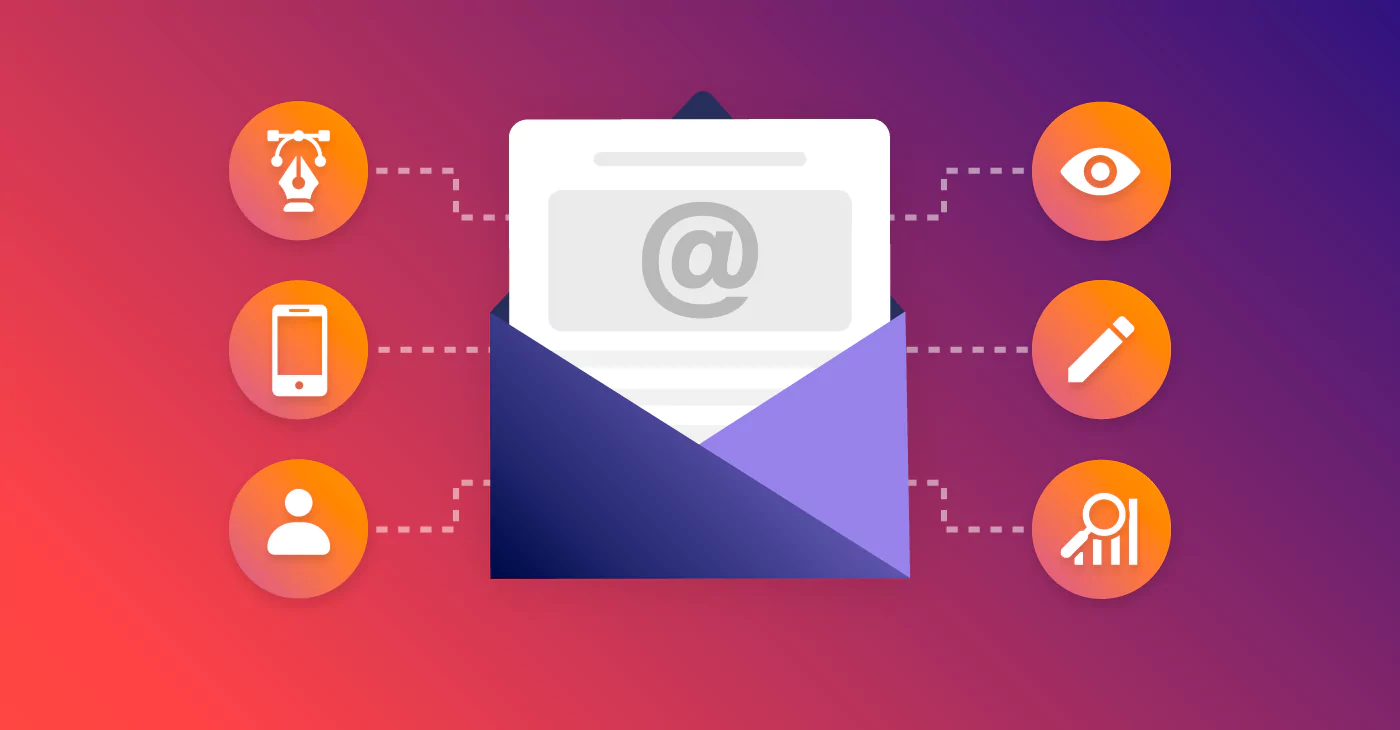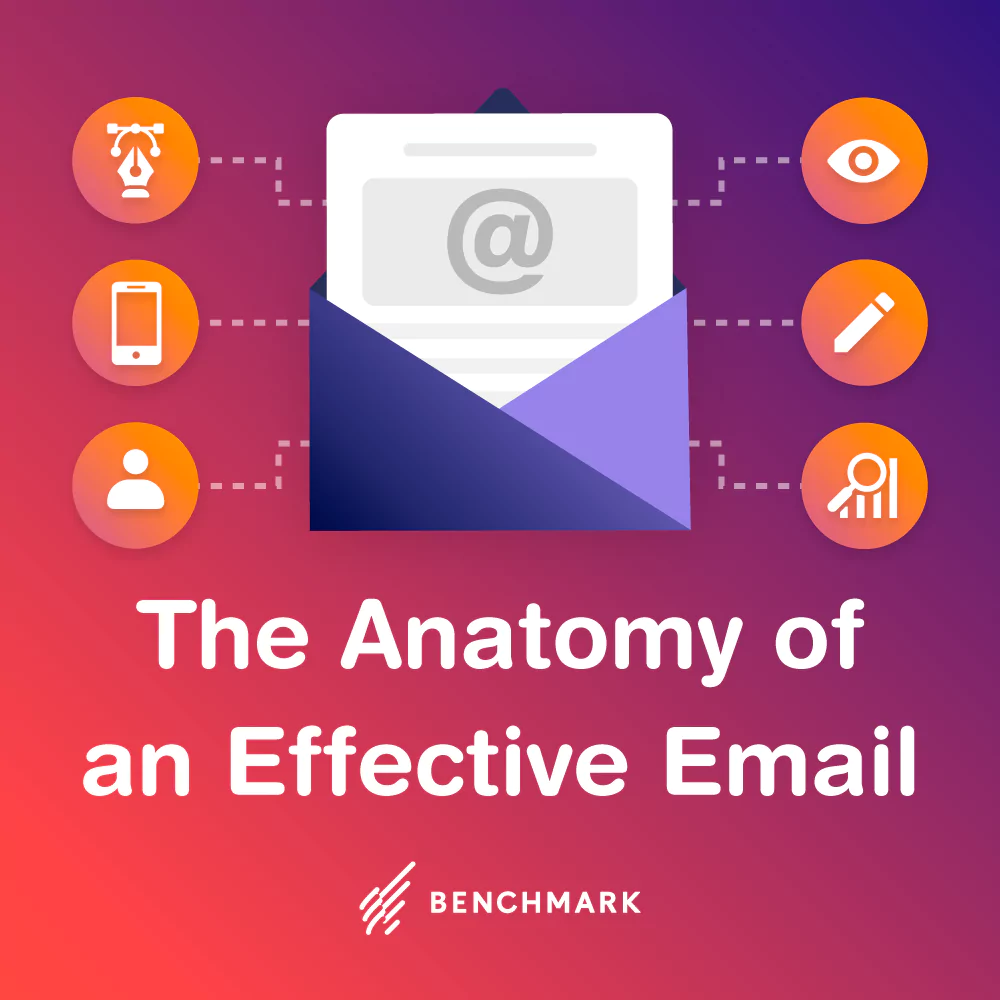
For every dollar spent on email marketing, you get $38 in return. That’s a lot of ROI for one strategy. But, before you hit send, there are various things you have to keep in mind that ensure your email is built effectively.
A successful email is much like the human body. It has various parts that all need to work together for it to function and operate smoothly as a whole. The anatomy of every effective email includes at least seven specific components that should be present, all of which will encourage people to open it, engage with the content, and eventually convert.
So to get it right and see that sweet ROI, here are the necessary components that comprise the anatomy of an effective email:

1. “From” Field
The “from” space is an essential piece of real estate because it can immediately initiate trust. Never set up your emails to be sent from a generic address. Instead, have the “from” contain the name of someone within your organization, preferably someone from your sales or marketing team. Next to the subject line, the “from” field is where most people look at before opening the email. And the easier it is to identify the source of an email, the more likely it will be opened.
2. Subject Line
As we alluded to in the previous point, your subject line is the second opportunity to make a good first impression. 35% of email recipients open an email based on the subject line alone.
If you don’t engage here, people will not be opening your email, which means you have zero opportunity to convert them. The body of your email can contain the best information in the world, but if the subject line is boring, they’ll never see it. A few tips to remember when creating subject lines:
- Don’t overuse punctuation (ie. !!!! or ????).
- Keep it short. No longer than 40-50 characters.
- Don’t use all caps.
- Don’t repeat the “from” label.
Still need some help with your subject lines? Use our free Email Subject Line Generator to help ensure your email subject lines are compelling and inspire opens.
3. Content
Content is the meat of the email. It’s everything, and it starts with your preview text. The preview text is like the sidekick of your subject line because it’s meant to provide more context and further compel readers to open the email. It should grab attention and get people engaged.
The body of your email is where you provide the primary messaging and information for your readers. It must create value for the consumer and cause them to take action (we’ll get to that specific part later). Make sure that whatever you’re promoting has your brand voice tied to it, is concise, and is presented in an easily digestible way. Make sure this content is personalized by addressing specific pain points and provides aid based on where the recipient is in the customer journey.
Commit to quality and send content that people actually want to read. It’s just as easy to fail an email campaign if your content is boring, or worse, rife with errors.
The content should also vary. Don’t send out the same campaign over and over. A/B test subject lines and content to see what people respond to. Then create more of it. A company newsletter is usually the best place to start if you’re scratching your head on content.
4. Call to Action
One of the most important parts of your email is where you ask people to “do something.” This is your call-to-action (CTA) and is what leads to conversion. Whether you want people to make a purchase or simply fill out a survey, you need to request it somewhere in the email.
When writing the content, ask yourself, “what do I want people to do after they receive this?” It doesn’t have to be a purchase. If it’s a survey, don’t forget to include a link where they can fill it out.
The idea is always to make the CTA clear and concise, so people aren’t wondering what to do next. One of the most engaging ways to do this is to include an easily clickable button that redirects people to your exact destination.
5. Visuals/Design
We have all heard the saying “a picture is worth a thousand words,” but it’s no different when it comes to email marketing. Using an image in an email appeals to the recipient’s visual nature. It makes it easier for them to receive information, it gives character to your emails, and it can break up the written content.
Don’t neglect visual components like color blocks or graphics. And make sure you give thought to the overall design and layout of your emails. Visuals play a big part in branding, and having them be consistent with the look and feel of your other digital assets and collateral is a must.
6. Mobile-Optimized
At this point, there’s no excuse for not having mobile-optimized emails. We already know that people are glued their phones, and with recent studies showing that up to 77% of emails are opened on mobile devices, the deal is sealed. You must be optimizing your emails for mobile. If someone receives an email they can’t read on their phone, they’re not only going to neglect reading it, but they may even unsubscribe from all your future email messages.
7. Analytics
Any email campaign you send out must always be measurable. Evaluating the performance of your email marketing strategies is critical to understanding what works and what is failing.
An effective email will have a high open-rate and click-rate, and if you measure a campaign and both of these metrics are failing, it’s time to make some changes.
When reviewing your email benchmarks and making adjustments, make sure you play around with A/B testing, the day and time you’re sending your emails, and frequency. These can all play a part in the overall effectiveness, and that’s what matters most.
So, when putting together your next email newsletter or campaign, make sure you pay mind to the seven pieces of the email anatomy mentioned above. Don’t neglect one over the other, as all are needed for well-functioning, successful email.






